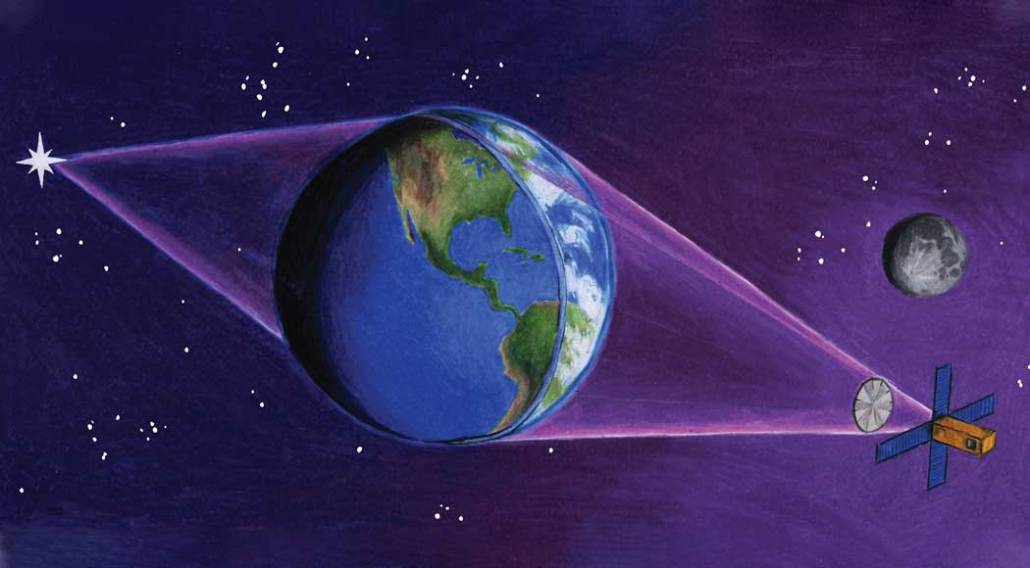A proposed space telescope would use Earth’s atmosphere as a lens
The ‘terrascope’ would use a detector in space to collect refracted light

BIG SHOT The bending of starlight caused by Earth’s atmosphere could be used to create a giant telescope, one scientist suggests, by placing a detector out in space (illustrated).
James Tuttle Keane







